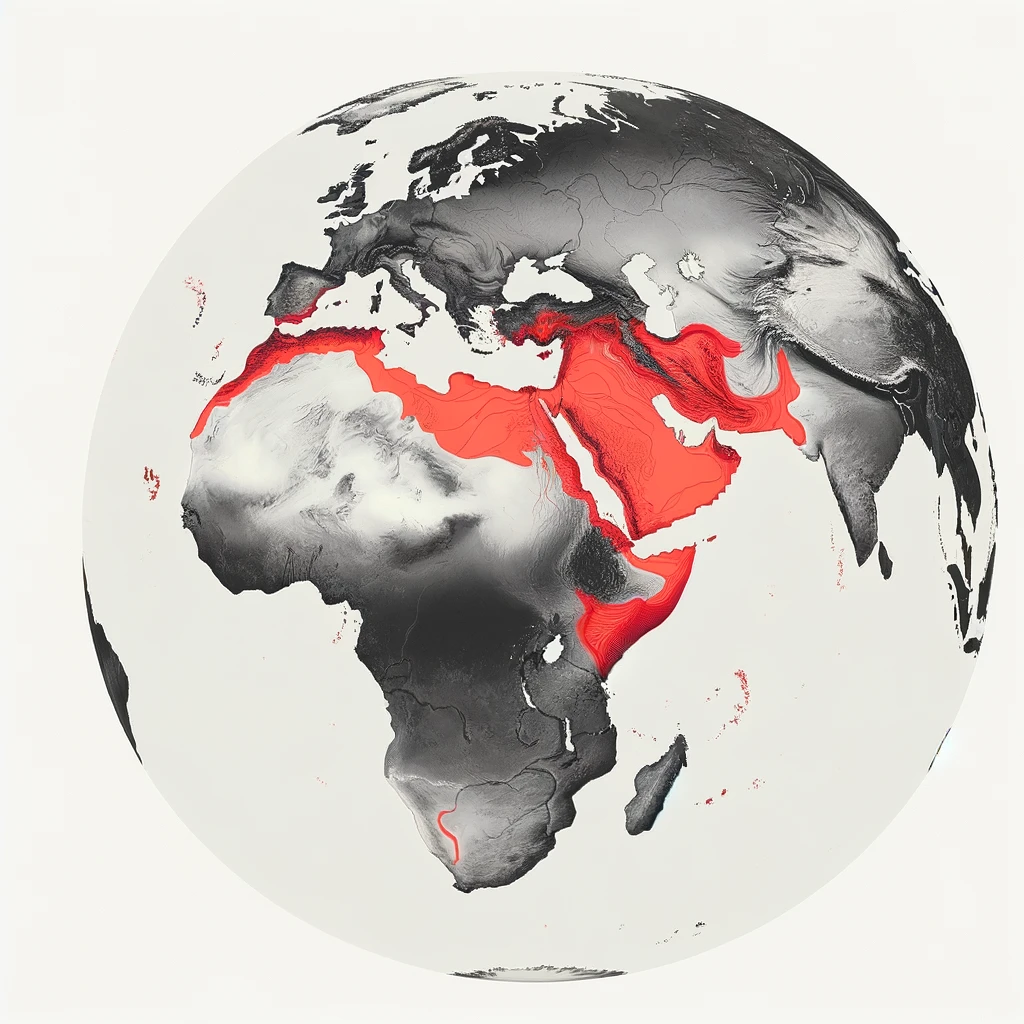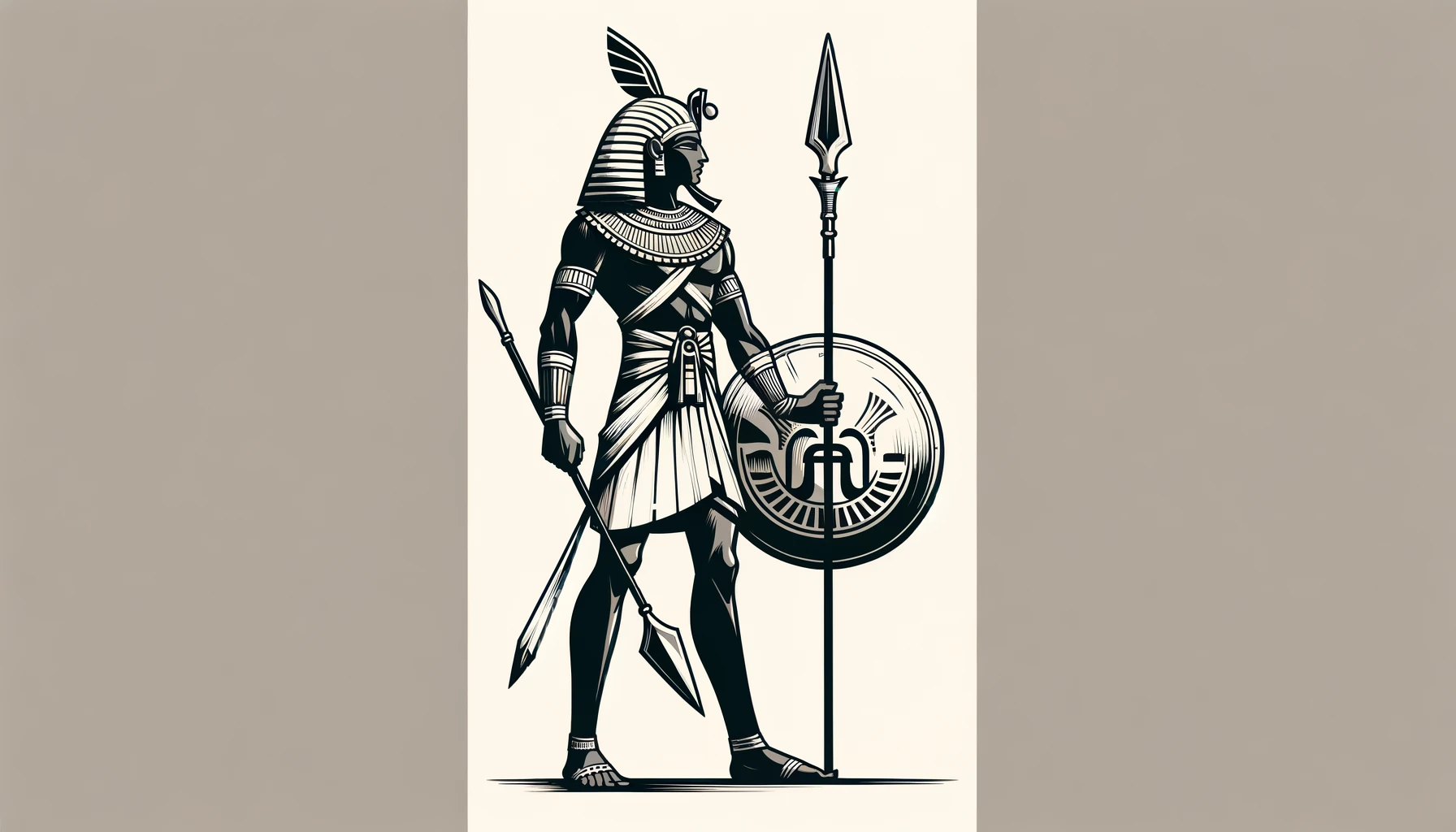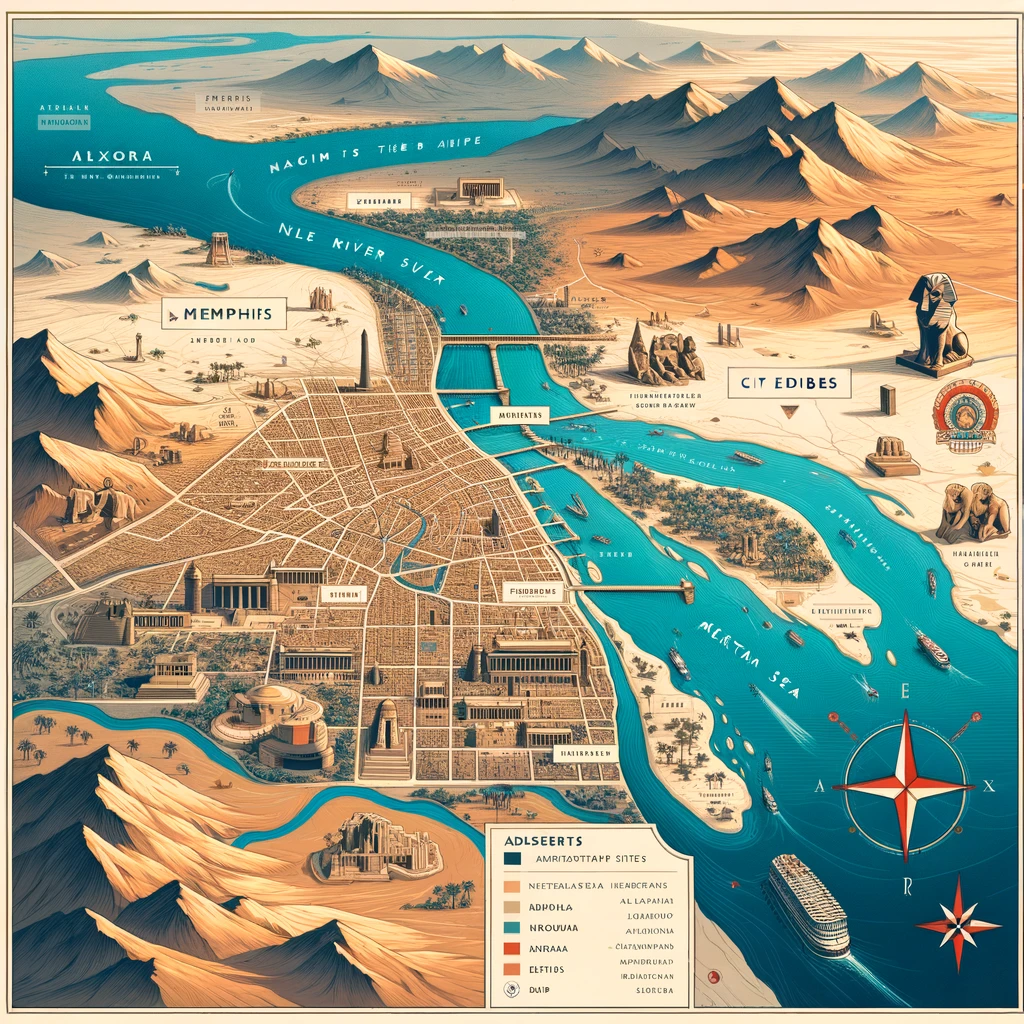Egyptian Civilization: A Mesmerizing Journey Through Time
Introduction
Ancient Egypt, a civilization that flourished along the lower reaches of the Nile River, stands as one of humanity’s greatest marvels. Its origins can be traced back to around 3100 BCE, with the unification of Upper and Lower Egypt under the first pharaoh. This civilization thrived for thousands of years, known for its rich cultural heritage, monumental architecture, and contributions to human knowledge.
Origins and Geography

The civilization of ancient Egypt was nurtured by the Nile River. Each year, the river floods, depositing fertile silt on its banks and allowing agriculture to flourish. This geographic advantage was the foundation upon which the civilization built its wealth and power, making the desert lands around a cradle for one of history’s most enduring cultures.
Where Egyptian Civilization is Located
The world map with the location of Ancient Egypt highlighted. It shows Egypt’s position in the northeastern corner of Africa, emphasizing its geographical context within the global map. This visual aids in understanding Egypt’s strategic location along the Nile River and its significance in ancient times.
Economy and Trade
The economy was primarily agricultural, with the Nile providing the necessary resources for growing crops like wheat and barley. Surplus produce enabled the growth of urban centers and facilitated trade. Egypt engaged in trade with its neighbors, exchanging gold, papyrus, linen, and grain for cedar wood, incense, ebony, copper, and lapis lazuli, enriching its culture and technology.
The Pyramids and Monumental Structures
The pyramids and monumental structures of ancient Egypt are enduring symbols of its civilization’s architectural and engineering prowess. These structures were not only tombs or temples but also expressions of the divine right of kings and a means to project the pharaoh’s power.
The Pyramids of Giza
Among these, the Pyramids of Giza, built during the Fourth Dynasty, stand out as one of the Seven Wonders of the Ancient World. The Great Pyramid of Khufu (Cheops) is the largest, originally standing at 146.6 meters (481 feet) tall. These pyramids were constructed with precision and skill, using millions of limestone and granite blocks, to serve as the eternal resting places for the pharaohs.
Other Architectural Marvels
- Luxor and Karnak Temples: These temple complexes in Thebes (modern Luxor) were dedicated to the god Amun-Re. They are celebrated for their colossal columns, statues, and the Avenue of Sphinxes.
- Valley of the Kings: This burial site on the west bank of the Nile was reserved for pharaohs and powerful nobles of the New Kingdom. It includes the tomb of Tutankhamun, discovered virtually intact in 1922.
- Abu Simbel: Built by Ramses II, these two temples were carved out of a mountainside in Nubia. Their massive rock-cut facades are dominated by four giant seated figures of the pharaoh.
Political and Social Structure
Egypt’s political system was a theocratic monarchy, with the pharaoh seen as a divine figure, the intermediary between the gods and the people. This central authority controlled the land’s resources and their distribution. Society was hierarchically structured, with priests, nobles, and officials making up the upper class, while farmers, artisans, and laborers formed the backbone of the economy.
Culture and Religion 
Egyptian culture was deeply religious, with a pantheon of gods and goddesses integral to daily life. Beliefs in the afterlife and the importance of rituals and funerary practices led to the construction of elaborate tombs and the practice of mummification. The Egyptians made significant advances in art, literature, and science, with notable achievements in medicine, astronomy, and mathematics. Hieroglyphics, the writing system, remains one of the most iconic aspects of their culture.
The map showcasing Ancient Egypt’s capital, Memphis, along with its influential areas along the Nile River, has been created. It highlights key features such as the Nile River’s path, major cities like Thebes and Alexandria, important religious sites, and iconic monuments including the Pyramids of Giza and the Great Sphinx.
Military and Wars of Ancient Egypt
The military history of Ancient Egypt is marked by periods of strength and dominance, punctuated by moments of conflict and external threats. From its early dynastic period, Egypt developed a professional army to defend its borders, expand its territory, and project its power across the Near East and parts of Africa.
Formation and Structure of the Army
The Egyptian army was initially composed of conscripted peasants and later included a more professional class of soldiers. It was organized into infantry, chariotry, and naval units. The chariots, introduced during the Second Intermediate Period, became a hallmark of the Egyptian military, offering mobility and speed. Soldiers were equipped with bows, spears, shields, and, later on, swords and body armor.

Major Conflicts and Campaigns
- Old and Middle Kingdoms: Early military campaigns were primarily defensive or small-scale offensive operations into Nubia to secure mining areas and into the Sinai Peninsula for its rich turquoise mines.
- New Kingdom: This period saw Egypt become a true imperial power. Pharaohs like Thutmose III and Ramses II led campaigns into Syria and Palestine, extending Egyptian control and influence. The Battle of Megiddo and the Battle of Kadesh were significant for their strategic and diplomatic outcomes.
- Sea Peoples Invasion: During the reign of Ramses III in the 12th century BCE, Egypt faced invasions from the mysterious Sea Peoples. Through a series of battles, notably the Battle of the Delta, Egypt managed to repel these invaders, securing its borders, but at great cost to its economy and military strength.
Defense Strategies and Fortifications
To protect its vast borders and trade routes, Egypt built a series of fortresses and outposts, especially in strategic locations like the eastern delta, Nubia, and the western desert. These fortifications helped secure the Nile Valley and the trade routes from potential raids and invasions.
Decline and Legacy
The decline of ancient Egypt was a gradual process, influenced by factors such as internal strife, invasions by Assyrians and Persians, and eventually the conquest by Alexander the Great in 332 BCE. Despite these challenges, Egypt’s legacy persists through its monumental architecture, like the Pyramids and the Great Sphinx, and its contributions to human knowledge and culture.
Conclusion
The military and architectural achievements of Ancient Egypt reflect its complex society, technological advancements, and the resources at the disposal of its pharaohs. From defending and expanding its borders through military might to constructing monumental structures that have withstood millennia, Egypt’s legacy is a testament to its innovative spirit and organizational capabilities.
Ancient Egypt’s civilization remains a testament to human ingenuity and endurance. Its sophisticated society, monumental architecture, and cultural achievements continue to fascinate and inspire. Through its rise and fall, Egypt has left an indelible mark on the course of history, embodying the spirit of a civilization that, despite the passage of millennia, still speaks to us of mysteries long past but never forgotten.






You can definitely see your skills in the work you write. The world hopes for even more passionate writers like you who aren’t afraid to say how they believe. Always follow your heart.
Excellent blog right here! Also your web site quite a bit up very fast! What host are you the use of? Can I am getting your affiliate link on your host? I desire my web site loaded up as quickly as yours lol
What i do not understood is in truth how you are now not really much more neatly-liked than you might be now. You are very intelligent. You recognize thus significantly in terms of this topic, produced me in my view imagine it from so many numerous angles. Its like men and women aren’t fascinated except it is something to accomplish with Woman gaga! Your personal stuffs great. Always deal with it up!
Enjoyed examining this, very good stuff, regards.
You actually make it seem so easy along with your presentation however I in finding this topic to be actually one thing that I feel I would never understand. It kind of feels too complex and very extensive for me. I am taking a look forward on your next publish, I will attempt to get the hold of it!
Very interesting details you have noted, regards for putting up.
I always was interested in this subject and still am, appreciate it for putting up.
I’ve been absent for some time, but now I remember why I used to love this blog. Thanks, I?¦ll try and check back more often. How frequently you update your site?
Hi there just wanted to give you a quick heads up. The text in your article seem to be running off the screen in Opera. I’m not sure if this is a format issue or something to do with browser compatibility but I thought I’d post to let you know. The layout look great though! Hope you get the problem fixed soon. Many thanks
I have been exploring for a little for any high quality articles or blog posts in this sort of space . Exploring in Yahoo I eventually stumbled upon this website. Studying this information So i¦m glad to exhibit that I’ve an incredibly good uncanny feeling I came upon just what I needed. I most unquestionably will make certain to don¦t omit this web site and provides it a look on a constant basis.
Would love to forever get updated great web site! .